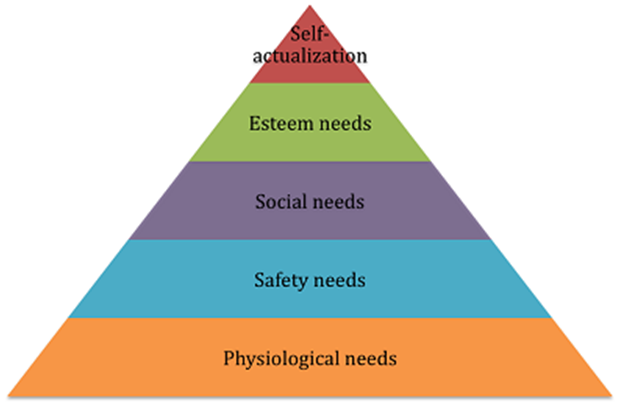HRM

Intensifying level of competition in job markets due to the increasing forces of globalisation has increased demand for the population of employable age in general, and university graduates in particular (Armstrong, 2010). Therefore, today employees have to be more proactive towards their careers fully utilising a range of available tools such as career mapping, career plan, and personal development plan. This article illustrates a personal career management plan for the author of the report. The report starts with discussing the dream position of the author and highlighting the main skills and qualities needed to be successful in this position. This is followed by a brief explanation of career mapping and planning methodology. Detailed explanations of chosen career path to reach the dream job have also been provided within the report, as well as, relevant career plan and personal development plan has been supplied. Moreover, analysis of major obstacles and challenges the author is likely face in the way of progressing towards the dream job has been included with a particular focus on challenges related to dealing with an international team. The article is concluded by drafting recommendations to future graduates on a different career they could have in a given field after they graduate. Dream Position: HRM Executive with a Multinational Corporation Human resources management (HRM) is a field of professional interest for the author because being employed in this field involves working and interacting with people different character and various backgrounds. Moreover, career in HR can be rewarding in many other ways, such as great influence on various aspects of organisation, assistance in personal and professional development of the workforce, and influence and participation in strategic level decision making. However, operating as a successful HRM executive for a multinational corporation requires a certain set of skills and competencies.…
By John Dudovskiy
Category: HRM

The main objective of strategic human resources management (SHRM) can be specified as “to ensure that human resource management is fully integrated into strategic planning, that HRM policies cohere both across policy areas and across hierarchies and that HRM policies are accepted and used by line managers as part of their every day work” (Regis, 2009, p.6). Generally, the main approaches to SHRM are divided into three main categories: universalistic, contingency, and configurational. Universalistic or ‘best practice’ approach to HRM relates to the viewpoint that there is a set of best HRM practices and their adoption is going to generate positive results regardless of the circumstances associated with organisations. Universalistic approach states that ‘best practices’ in relation to a wide range of HR issues such as employee recruitment and selection, training and development, employee motivation is equally applicable to each organisation regardless of the nature of unique aspects organisations might have. Contingency or ‘best fit’ approach on the other hand, disagrees with the presence of universal prescriptions to HR issues and stresses the need for integration between HR policies and a wide range of other organisational policies. Configurational approach to SHRM “stresses the need for practices that are contingent with organisational circumstances, but in addition emphasizes the need for horizontal or internal fit” (Sparrow et al., 2004, p.158). To put is simply, configurational approach recognises the validity of ‘best practices’, but at the same time, accepts the importance of adjustment of HR policies with the overall organisational strategy. Alternatively, approaches to SHRM can be divided into four categories: strategy-focused, decision-focused, content-focused, and implementation-focused. References Regis, R. (2009) “Strategic Human Resource Management & Development” Excel Books Sparrow, P.R, Brewster, C. & Harris, H. (2004) “Globalising Human Resource Management” Routledge
By John Dudovskiy
Category: HRM

The theory of Achievement Motivation proposed by David McClelland (1965) envisages that individuals have three different types of needs – need for achievement, need for power, and need for affiliation, but there is a difference between people in terms of the extent of influence of each need on their behaviour. It is important to note that “although workers may possess all these needs to some degree, each individual is most strongly motivated by one” (Lewis et al., 2011, p.150). Therefore, organisational managers are responsible to identify the nature of the need for each individual member of staff, and motivate them accordingly. References McClelland, D. (1965) “Toward a Theory of Motive Acquisition” American Psychologist

Strategic Human Resource Management (SHRM) can be explained as “a general approach to the strategic management of human resources in accordance with the intentions of the organisation on the future direction it wants to take” (Giri, 2008, p.21). In simple terms, SHRM attempts to achieve a high level of integration between corporate strategy and HRM. SHRM is perceived to be a much wider concept than traditional HRM in a way that SHRM addresses the impact of a range of factors on HR practices. Moreover, four major distinctive points of SHRM from traditional HRM can be specified in the following manner: a) SHRM concentrates on the level of efficiency of individual employee performances b) The importance of regularly introducing changes and organisational re-engineering is acknowledged within the framework of SHRM c) SHRM recognises the role of effective organisational leadership d) SHRM concentrates on team learning and sharing knowledge within organisations Evolution of HRM into SHRM, and its increasing role in organisational performance owes to intensifying level of competition in the marketplace. In other words, with the level of competition in the market becoming intense for almost all industries, businesses are actively striving to explore additional sources of competitive advantage. From this perspective, company human resources are proving to be an effective source of competitive edge through their creativity, and thus strategic approach to HRM is required in order to develop and sustain this important competitive edge. There are many examples in business world that illustrate positive implications of adopting strategic approach to HRM on organisational performance. For example, in UK based John Lewis plc 81,000 employees are called as Partners (Our Employees, 2012), and accordingly company human resources are treated as strategic partners in the achievement of long-term aims and objectives. Managers are recommended to approach HR aspect of the business…
By John Dudovskiy
Category: HRM

Employee recruitment can be explained as a process of finding and attracting job candidates that are suitable for the position to be filled. Once a number of candidates are short listed by the end of recruitment, the most suitable candidate(s) will be selected to be hired by the company. Employee recruitment process may comprise the following stages: Stage 1: Recruitment planning Recruitment process starts with recruitment planning with the analysis of the numbers and sufficiency of employees in order to achieve long-terms aims and objectives of the company. Importance of recruitment planning can be explained in a way that failure to deal with it appropriately can compromise long-term growth prospects for the company. Once the recruitment planning has identified the number of positions to be added in the company, job description and person specification for the position needs to be formulated in a clear and unambiguous manner. Stage 2: Identifying recruitment sources Recruitment sources can be divided into two groups: internal and external. To put it simply, internal recruitment involves recruiting candidates within the company, whereas external recruitment is recruitment of candidates not currently employed by the company. External sources of recruitment include educational institutions, data in job centres, job agencies, and even competitors. Internal sources of recruitment, on the other hand, include employee files and databases. Identifying a suitable recruitment source is important because the level of suitability of candidates for the job depends on the type of the recruitment source selected. Stage 3: Generating candidates Once a suitable recruitment source has been identified an adequate pool of candidates need to be generated. Candidates from external recruitment source can be generated through advertisements in the media, campus recruitment or with the assistance of relevant agencies. Generating candidates from internal recruitment source, on the other hand, can be…

Employee training and development can be specified as an important aspect of HRM and these importance further increases in times of global recession. To put it simply, times of global recessions and consequent challenges for businesses in many levels puts extra pressure for management at all levels to be more adaptive, flexible and focused. Accordingly, only highly qualified and motivated employees at all levels would be able to safeguard their company from becoming a history in times of economic uncertainties. Commitment to employee training and development in an effective manner can provide businesses a set of advantages such as high level of employee creativity, increased level of motivation to perform duties at work. In devising and implementing employee training and development programs individual learning styles of employees need to be taken into account and addressed in correct manner. Generally, learning styles are divided into seven catagories: visual, aural, verbal, physical, logical, social, and solitary. Furthermore, the provision of training and development programs for the workforce needs to include the principles of classical conditioning. Specifically, known as learning by association, conditioning theory highlights the role of stimuli and unconditioned response to it during the learning process. A high level of importance of investment in employee training and development in times of global economic recession is appropriately acknowledged by Emirates Airlines, one of the main players in the global airline industry. Specifically, amid growing challenges for the airline industry due to the global economic crisis, Emirates Airlines employee training and development programs and initiatives including Learning Resource Centres, My Learning Zone portal, and annual professional development courses were not impacted by company cost-saving programs. Organisational managers are recommended not to compromise the quality of employee training and development due to cost saving considerations in times of global economic recession. Such a practice…

Employee motivational tools can be divided into two categories: tangible and intangible. Tangible motivational tools include money, holidays, and other tangible perks and benefits in the workplace, whereas intangible tools of employee motivation include verbal and written acknowledgement of employee contribution, celebration of memorable dates such as birthdays, anniversaries and achievements, developing effective work environment etc. A major internet company, Google can be mentioned as a model workplace where design of workspaces and working environment has been developed in a way that they have positive impact on the level of employee motivation. Specifically, Google offices around the world are have many unique features in terms of design and decorations and these are aimed at increasing the level of employee motivation and creativeness. Organisational managers are recommended to recognise the level of employee motivation as one of the most crucial factors of competitive advantage in the market. Moreover, managers are recommended to use both; tangible, as well as, intangible motivational tools need to be used by management in an effectively integrated manner in order to benefit from highly motivated workforce.

Hertzberg’s (1959) Motivation and Hygiene factors represent a prominent model in the area of employee motivation. In this model employee motivation is found to be impacted by two major factors: motivators and hygiene. Hygiene factors such as company policies, compensation and working conditions do not necessarily motivate employees; however, their absence is most likely to cause dissatisfaction. Motivators, on the other hand, include the level of achievement recognition by management, career progress opportunities, and responsibilities associated with the position and these factors can be manipulated with in order to achieve higher level of employee motivation. Importantly, managers need to be able to distinguish between motivators and hygiene in their organisations, and they need to be able to achieve a positive impact of both factors. Intrinsic motivation- the self-generated factors that influence people to behave in a particular way or to move in a particular direction. These factors include responsibility (feeling that the work is important and that having control over one’s own resources), autonomy (freedom to act), scope to use and develop skills and abilities, interesting and challenging work and opportunities for advancement. Extrinsic motivation- what is done to or for people to motivate them. This includes rewards, such as increased pay, praise, or promotion, and punishments, such as disciplinary action, withholding pay, or criticism. McClelland’s theory (1961, p.214) assumes that people have three innate needs: the need for achievement, the need for affiliation, and the need for power. According to Adams’ theory (1965, p.82) employees always strive for equity between themselves and other workers. Equity is achieved when the ratio of employee outcomes over inputs are equal. Victor Vroom’s theory states, (1964, p.122) that employee effort will lead to performance and performance will lead to rewards. Rewards can be either positive or negative. Positive rewards will motivate employees, while negative rewards…
By John Dudovskiy
Category: HRM

The theoretical framework of Maslow’s Hierarchy of Needs (1943) is considered by many to be the most substantial theory in the area of human motivation. Maslow (1943) categorises human needs into the five different levels and states that are evolved in a sequential manner. Maslow’s Hierarchy of Needs Psychological needs include basic human needs that are necessary to sustain life such as food, clothing, sleeping etc. Satisfaction of psychological needs in individual results to an emergence of safety needs that include being free of fear or deprivation of basic needs. The next level of needs is social needs that follow after the satisfaction of safety needs. Namely, social needs relate to the sense of acceptance by various groups. Esteem needs, emerging in the next stage “motivates a person to contribute his or her best to the efforts of the group in return for the numerous forms of reward that recognition can assume” (Montana and Charnov, 2008, p.239). Adequate satisfaction of esteem needs makes self-actualisation needs predominant. This stage of need is closely associated with maximising an individual’s potential regardless of its nature. The practical implications of “Hierarchy of Needs” are that managers must adopt an individual approach when motivating their subordinates addressing the immediate needs of each individual employee. According Maslow (1943) in their practices organisational managers need to address more immediate needs of employees in order to achieve the highest level of motivation. In other words, trying to appeal to self-esteem needs of an employee that has not satisfied his belonging needs is not the best approach in terms of achieving a high level of employee motivation. References Maslow, A.H. (1943) “The Theory of Human Motivation” Psychological Review, 50(4) Montana, P.J. & Charnov, B.H. (2008) “Management” Barron’s

Employee motivation can be defined as “influencing others in a specific way towards goals specifically stated by the motivator, conforming within organisational constraints” (MacKay, 2007, p.21) and the level of motivation of the workforce represents one of the most critical factors affecting organisational performance. One of the main reasons for increasing importance of motivation in the workplace relates to the role of human resources becoming greater in ensuring long-term growth for the business. Employee motivation is an essential component of a successful business practice. No matter how appealing products and services a company is providing, how efficient are company’s business and marketing strategy and what size of budget does a company have to operate, low morale and lack of motivation in employees could be a major problem for companies who aim to make a profit in marketplace. It has been argued that while each individual has a general idea of what motivation is, these ideas differ from each other. One of the most comprehensive definitions of the term motivation is offered by Business Dictionary (2012) as internal and external factors that stimulate desire and energy in individuals to be interested and committed to a position, role or subject in a continuous manner, and exhibit persistent effort in achieving a goal. Alternatively, motivation can be defined as “a process of stimulating someone to adopt a desired course of action” (Kumar, 2008, p.12), and the level of employee motivation can be justly specified as one of the major factors contributing to overall organisational competitiveness It has been also said that “all employees have unique needs that they seek to fulfil through their jobs. Organisations must devise a wide array of incentives to ensure that a broad spectrum of employee needs can be addressed in the work environment, thus increasing the likelihood of…
